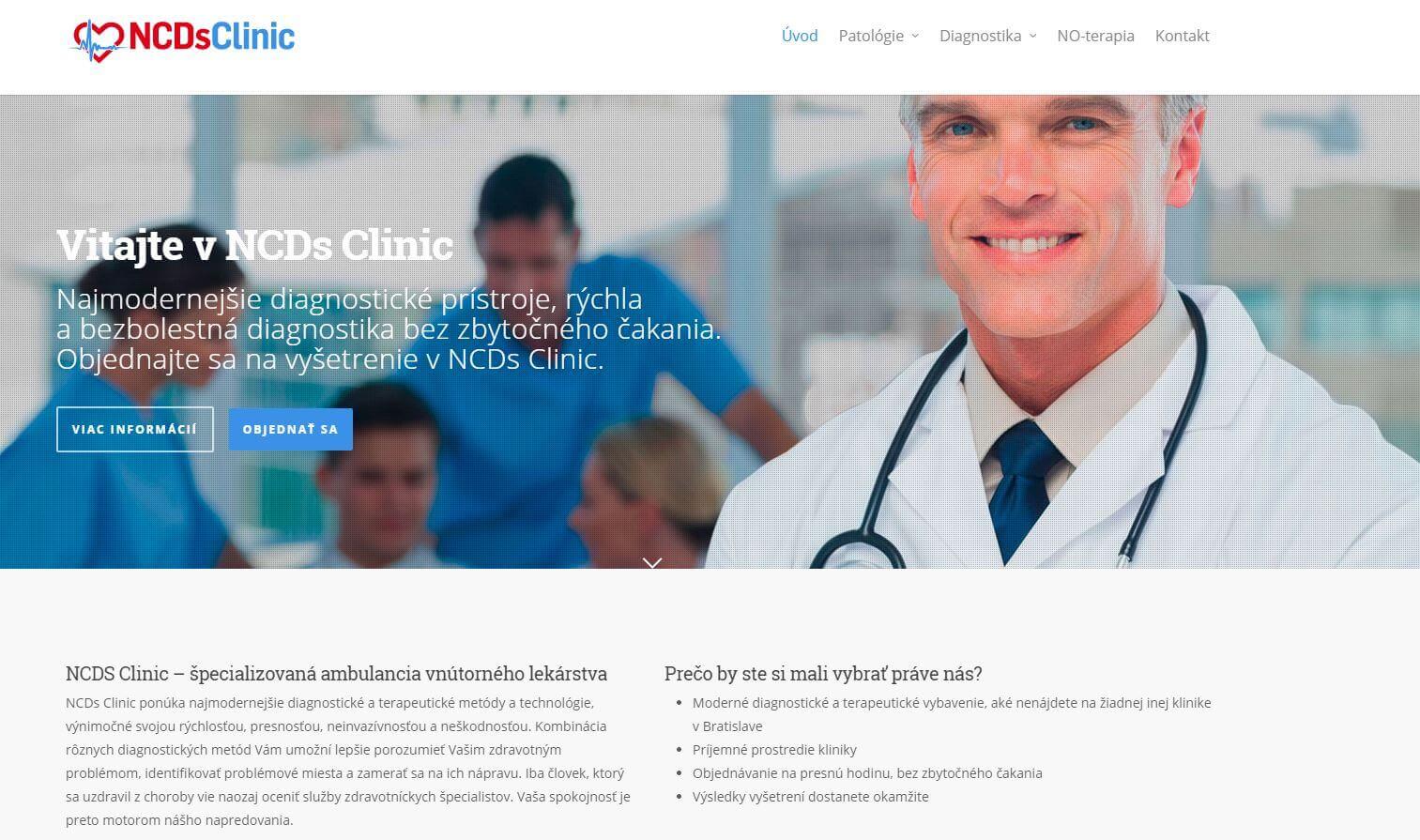Medical devices
search
news
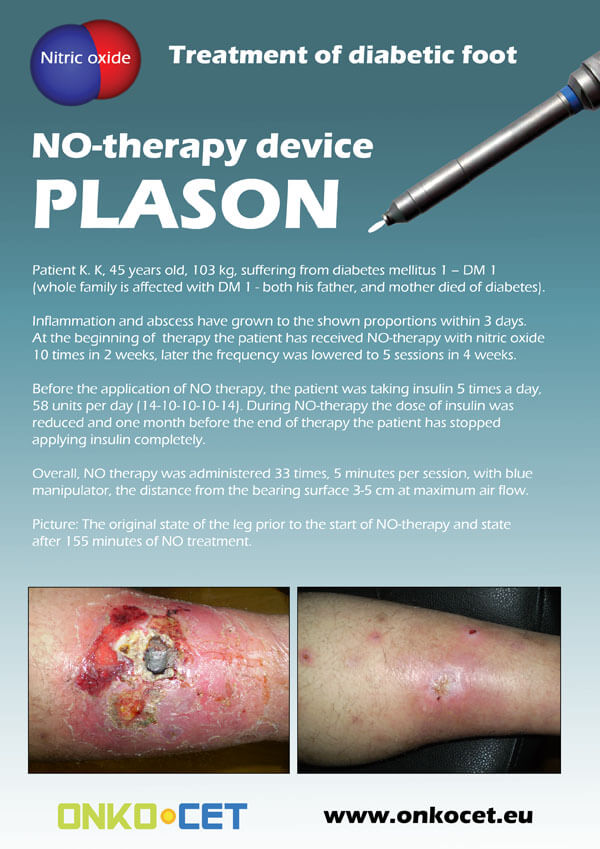
The PDF with the short report with pictures from the therapy of a diabetic foot can be viewed or downloaded here.
The pictures from the treatment of unhealing wounds an be found here:
http://www.onkocet.eu/en/produkty-detail/220/1/
The pictures from the treatment of unhealing wounds an be found here:
http://www.onkocet.eu/en/produkty-detail/293/1/
ONKOCET Ltd. has exhibited the devices from its portfolio on the MEDTEC UK exhibition in Birmingham, April 2011 through our partner Medical & Partners.
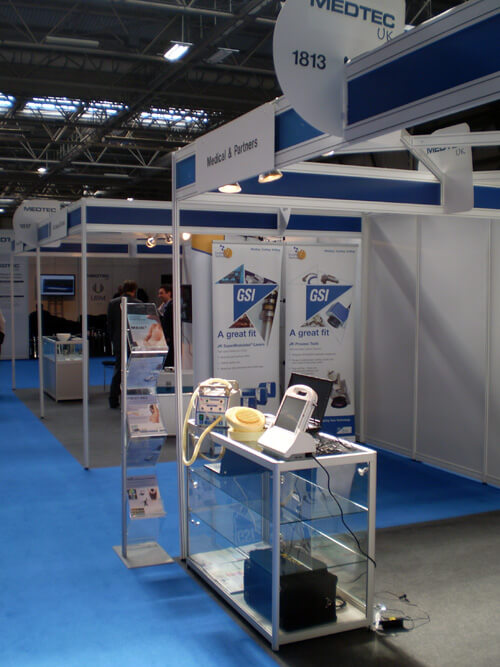
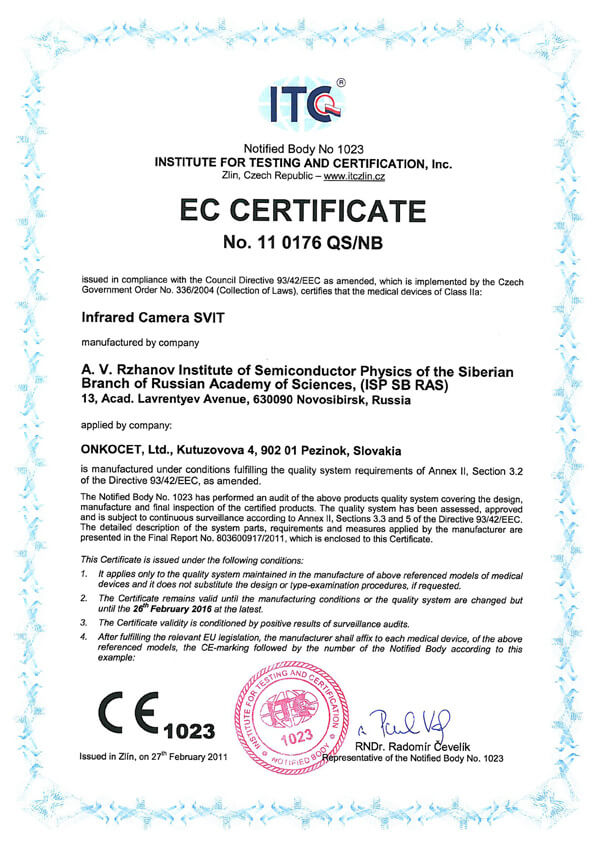 The ONKOCET company has successfully reached the certification of yet another medical device, Infrared Camera SVIT. The Certificate can be found here. The videos from the device operation can be found here.
The ONKOCET company has successfully reached the certification of yet another medical device, Infrared Camera SVIT. The Certificate can be found here. The videos from the device operation can be found here.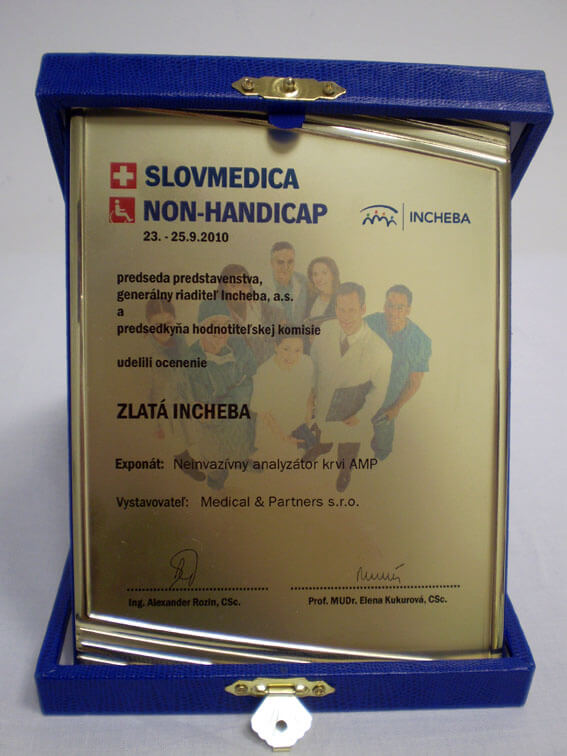 Our device, the non-invasive blood analyzer AMP has won the Golden Incheba prize at a medical exhibition SLOVMEDICA - NON-HANDICAP 2010. A big thank you goes to the organizers of the exhibition for acknowledging the quality of our device and to the exhibitor, the Medical & Partners company, for introduction of the AMP device to the medical public again.
Our device, the non-invasive blood analyzer AMP has won the Golden Incheba prize at a medical exhibition SLOVMEDICA - NON-HANDICAP 2010. A big thank you goes to the organizers of the exhibition for acknowledging the quality of our device and to the exhibitor, the Medical & Partners company, for introduction of the AMP device to the medical public again.We are pleased to inform our business partners, that our company has succesfully finished the certification process of Concor Soft Contact Lenses.
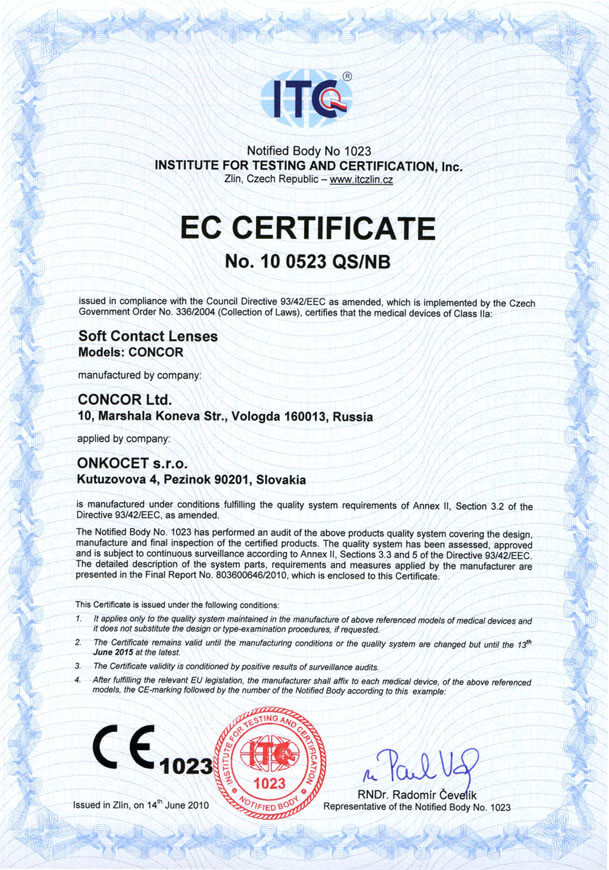 You can find the certificate here.
You can find the certificate here.More information on Concor Soft Contact Lenses go to section Medical preparations/Concor soft contact lenses, or follow this link.
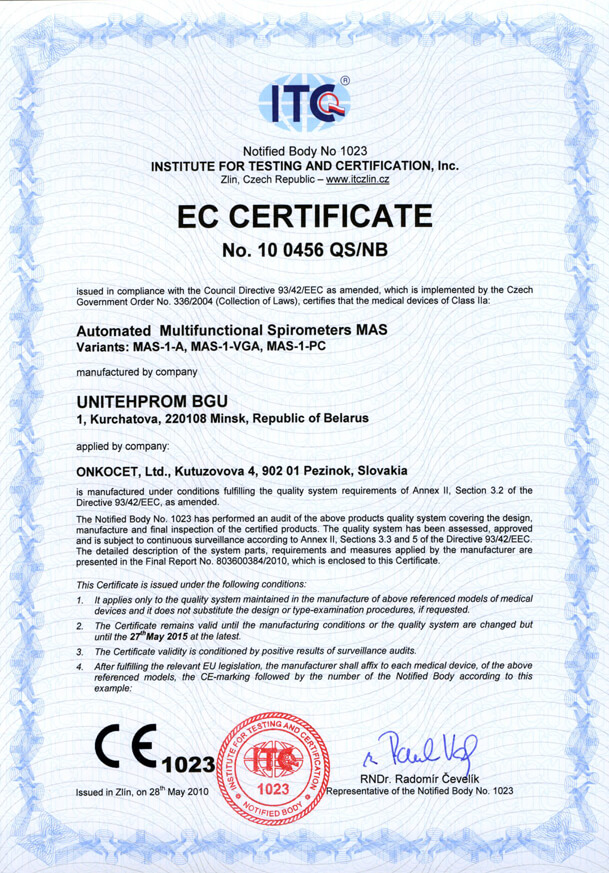 Our company has finished the certification process for another medical device, computerized spirometer MAS-1K with oximeter. You can find the device certificate here.
Our company has finished the certification process for another medical device, computerized spirometer MAS-1K with oximeter. You can find the device certificate here..jpg) Since May 2010 there is a new version of AMP device available.
Since May 2010 there is a new version of AMP device available.Follow this link if you want to see the pictures and specifications of the device.
http://www.onkocet.eu/en/produkty-detail/293/1/
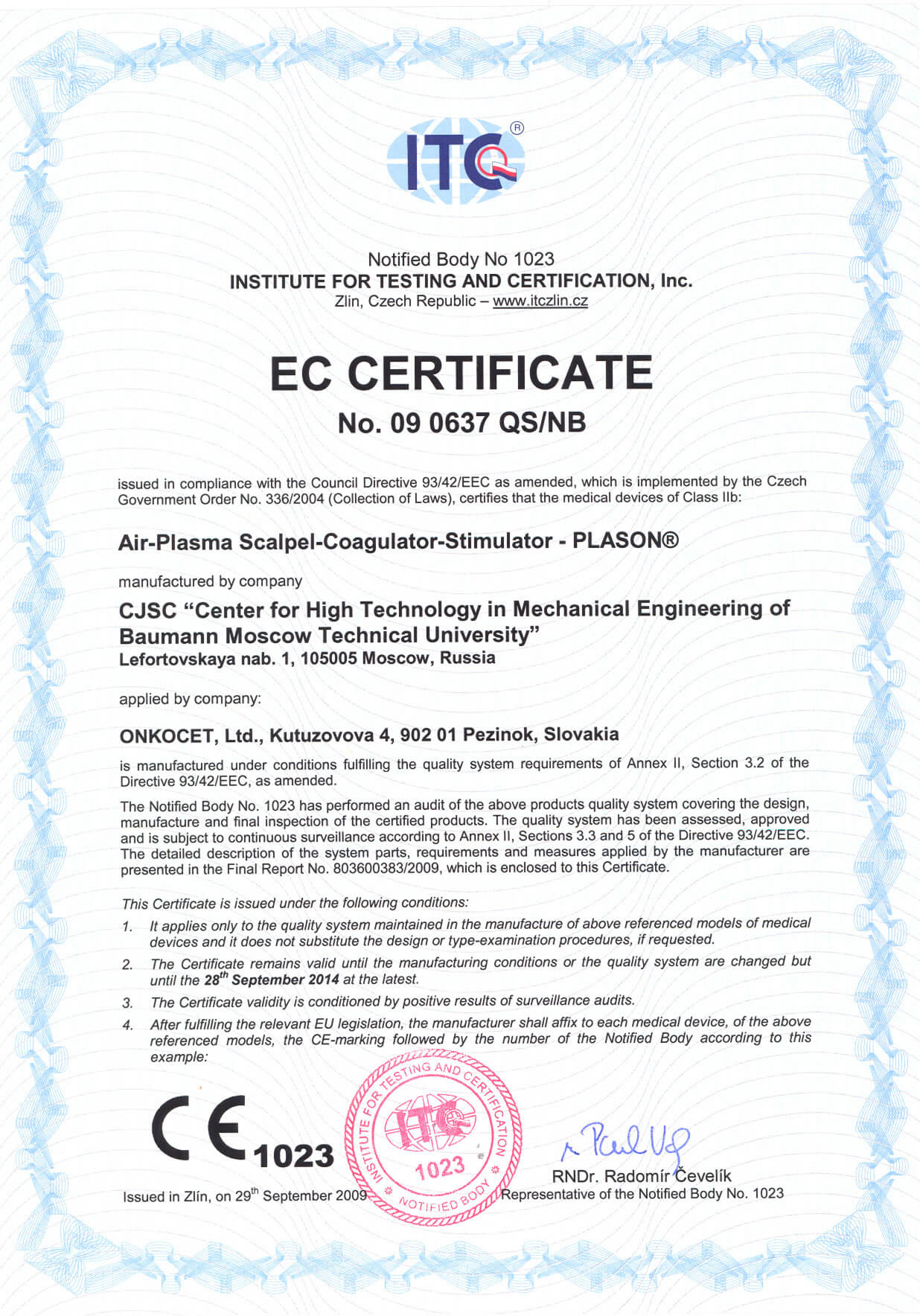 Dear partners,
Dear partners, In October 2009 we have received CE certificate for another device from our portfolio, NO therapeutical device PLASON. You can find more information about this revolutionary device, used for healing of unhealing wounds, diabetic foot, or for cosmetical purposes, at our webpage, section "Medical devices" -> PLASON-NO Therapy.
.gif)
Best regards
Team of ONKOCET Ltd. company
Plason device
PLASON
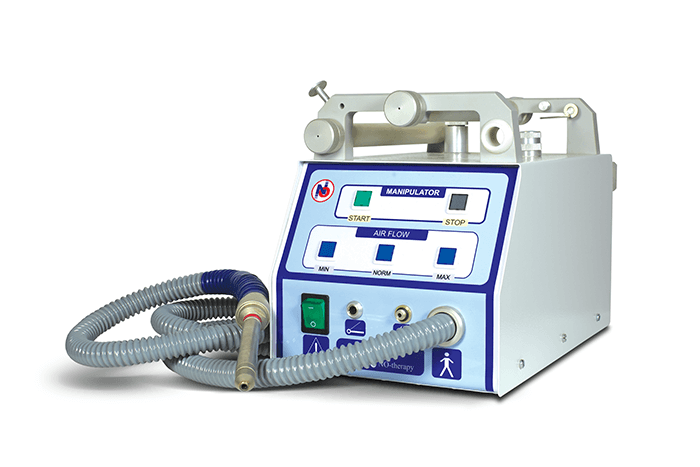
Scientists from the Sechenov Moscow Medical Academy, the Semenov Institute of Chemical Physics RAS and the Bauman Moscow State Technical University have shown that nitric oxide (NO), in addition to its other wonderful properties, promotes wound healing.
They performed research on laboratory rats. Under anaesthetic the creatures were administered regular wounds and then the scientists observed the way they healed. The experimenters had to obtain not only regular, but septic wounds too and therefore they infected half of the cases with staphylococcus.
For one minute wounded rats from the test groups were treated with nitric oxide on the second, third, fourth and sixth day after the operation. To do this the scientists used a special device, a “Plazon”, created at the Bauman MSTU. Thanks to high temperature a plasmochemical reaction occurs and NO is synthesized from oxygen and nitrogen, which cools to room temperature on output. The concentration of the derived nitric oxide can be regulated. The animals from the control groups were left unaffected.
It transpired that the wounds treated with nitric oxide healed much faster than those that were not. This applied both to dry and to septic wounds. Uninfected wounds in the control group healed on average in 29 days; after treatment with nitric oxide they healed in 22, a whole week being won. Septic wounds in the control group heal in thirty-three and a half days and after nitric oxide treatment –in twenty-four, nine days faster.
The scientists believe that nitric oxide treatment could become a promising method in wound treatment. As far as the Plazon device is concerned, its first clinical tests are underway. First results are encouraging.
